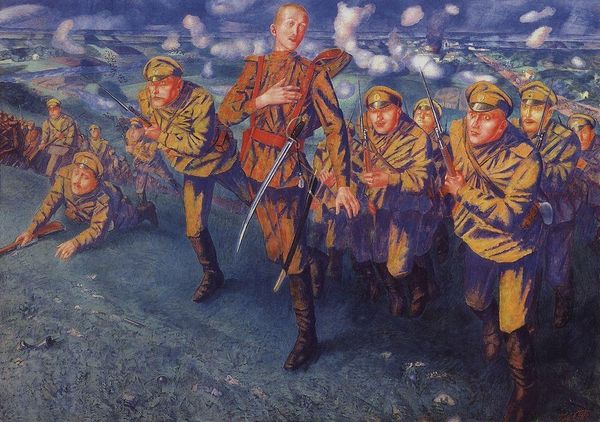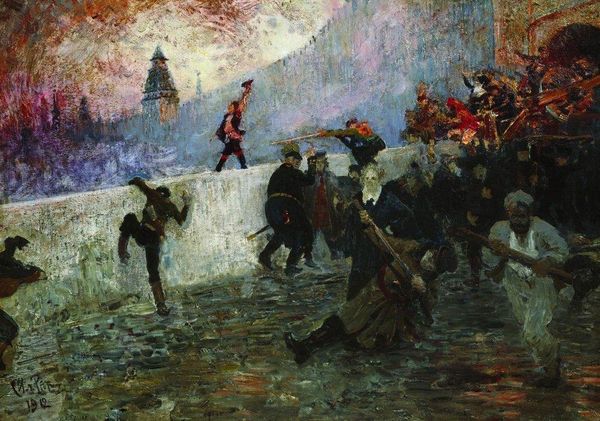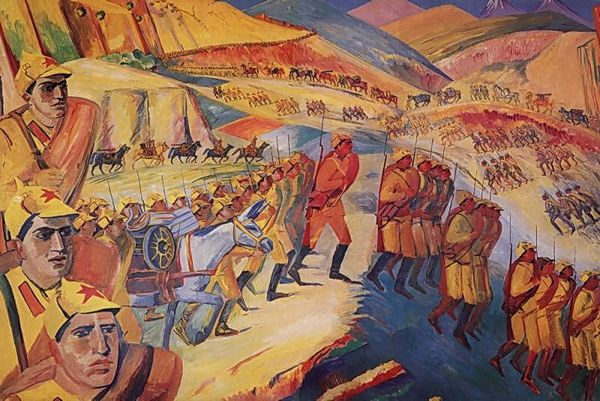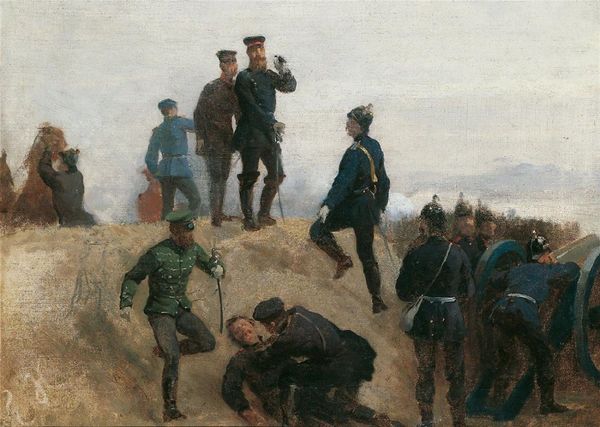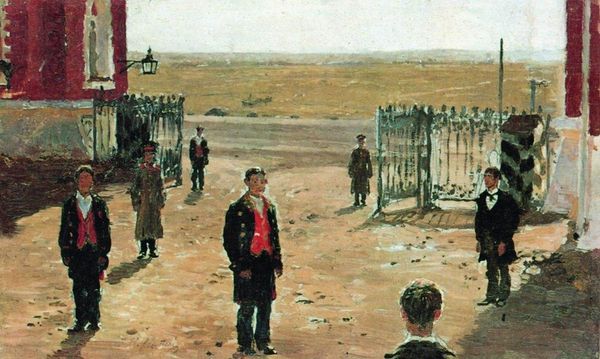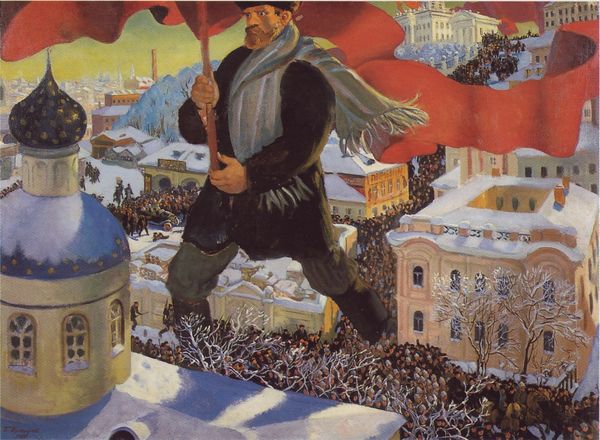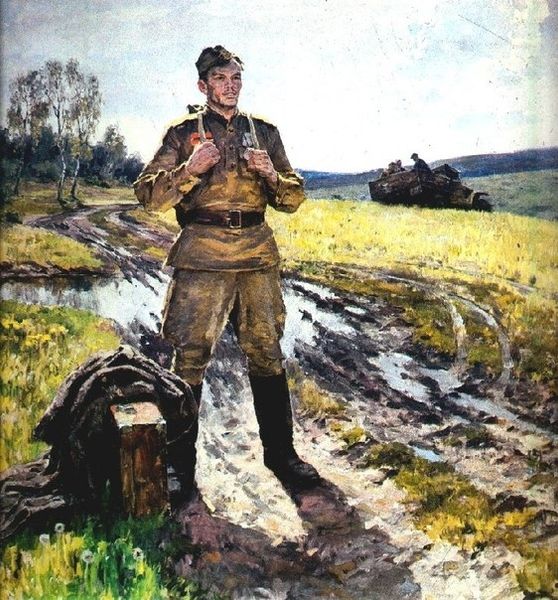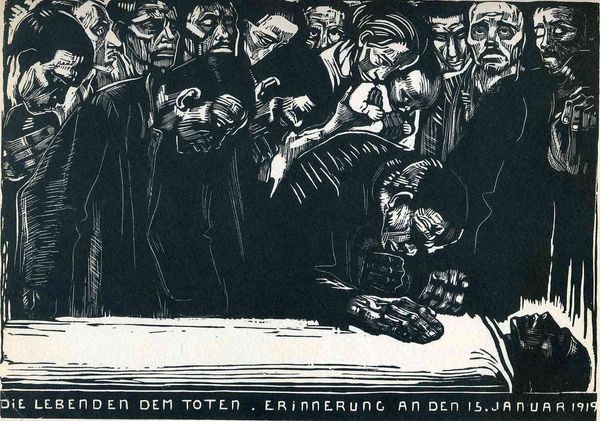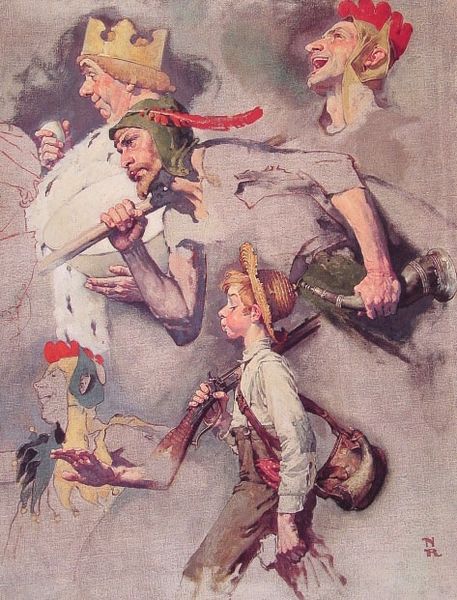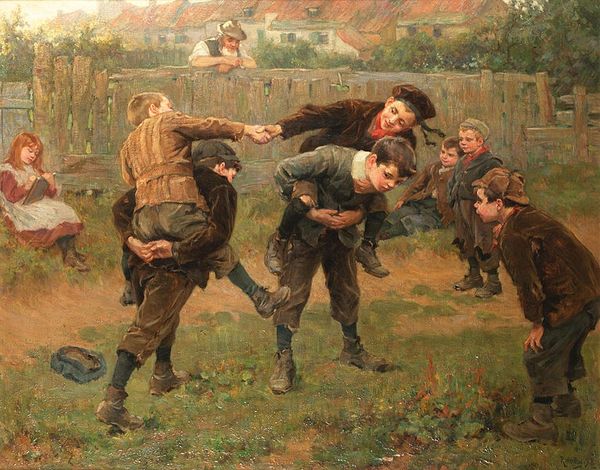
painting, oil-paint
#
painting
#
painting
#
oil-paint
#
landscape
#
soviet-nonconformist-art
#
figuration
#
oil painting
#
history-painting
#
realism
Dimensions: 196 x 248 cm
Copyright: Public domain
Editor: We’re looking at Kuzma Petrov-Vodkin’s “Death of a Commissar,” painted in 1928. It's an oil painting. What strikes me immediately is the almost unsettling serenity of the scene despite the violence implied. The wounded man’s gaze is so… upward. What do you see here? Curator: That upward gaze, yes, it pulls the whole painting into a different dimension, doesn't it? It's like he's not just dying; he's transcending. I see a canvas steeped in the realities of revolution, but rendered with this incredibly detached, almost dreamlike quality. Consider the high vantage point, that "spherical perspective" Petrov-Vodkin favoured. It is meant to give us an almost God-like view, don’t you think? The past receding in shades, a stark foreground, figures that float in my vision and hover just over the battlefield, yet a sense of unity of struggle still seems to permeate... I want to ask, is it triumph or tragedy? What about you? Editor: I was so fixated on the main figures, I missed that 'spherical perspective'! So the whole canvas has, literally, a wider scope, connecting those individual sufferings to this broader historical narrative. But there is beauty here amidst chaos! Curator: Precisely! And that tension is precisely what makes it so captivating and timeless. A reminder, perhaps, that even in the face of oblivion, there can be a kind of fierce beauty or tragic hope. I wonder if Petrov-Vodkin suspected how history would view the revolution as he put brush to canvas. Editor: This was not what I expected from a history painting. The way we interpret events is changed when artistic license blends with reality! Thanks for shining a light on seeing through a revolutionary vision!
Comments
No comments
Be the first to comment and join the conversation on the ultimate creative platform.

